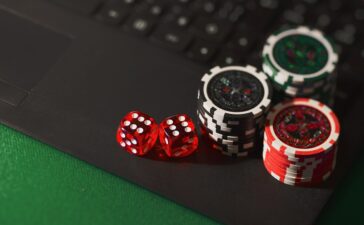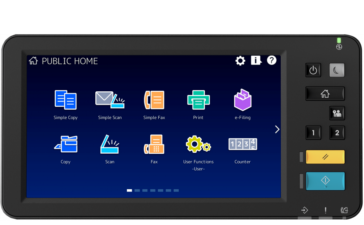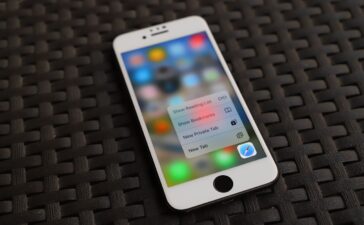In the realm of high-stakes investments, the financial journey often involves evaluating various assets and understanding their potential for appreciation or depreciation. Recently, Mr. Durrani made two significant purchases: Mr Durrani bought a plot of land for $180,000 and a car for $3,320,000. Both assets offer unique financial trajectories—one appreciates while the other depreciates. This blog post delves into the details of these investments, calculating the value of each asset after three years and determining Mr. Durrani’s profit or loss upon selling both assets at that time.
Investment Breakdown
Let’s break down the details of Mr. Durrani’s investments:
- Plot of Land:
- Initial Purchase Price: $180,000
- Annual Appreciation Rate: 30%
- Car:
- Initial Purchase Price: $3,320,000
- Depreciation Rate: 20% in the first year, then 15% annually thereafter
We will calculate the value of each asset after three years and then determine Mr. Durrani’s overall profit or loss if he sells both assets at that point.
1. Value of the Mr Durrani bought a plot of land After 3 Years
The Mr Durrani bought a plot of land appreciates uniformly at a rate of 30% per annum. To calculate its value after three years, we use the formula for compound growth:
V=P×(1+r)tV = P \times (1 + r)^tV=P×(1+r)t
Where:
- VVV is the future value of the land
- PPP is the initial purchase price ($180,000)
- rrr is the annual growth rate (30% or 0.30)
- ttt is the time in years (3 years)
Plugging in the values:
V=180,000×(1+0.30)3V = 180,000 \times (1 + 0.30)^3V=180,000×(1+0.30)3
V=180,000×(1.30)3V = 180,000 \times (1.30)^3V=180,000×(1.30)3
V=180,000×2.197V = 180,000 \times 2.197V=180,000×2.197
V=395,460V = 395,460V=395,460
After three years, the value of the plot of land will be approximately $395,460.
2. Value of the Car After 3 Years
The car depreciates by 20% in the first year and by 15% each subsequent year. We need to calculate the value of the car at the end of each year and then at the end of the third year.
- End of Year 1:
The car depreciates by 20% in the first year, so:
Value after Year 1=Initial Price×(1−Depreciation Rate)\text{Value after Year 1} = \text{Initial Price} \times (1 – \text{Depreciation Rate})Value after Year 1=Initial Price×(1−Depreciation Rate)
Value after Year 1=3,320,000×(1−0.20)\text{Value after Year 1} = 3,320,000 \times (1 – 0.20)Value after Year 1=3,320,000×(1−0.20)
Value after Year 1=3,320,000×0.80\text{Value after Year 1} = 3,320,000 \times 0.80Value after Year 1=3,320,000×0.80
Value after Year 1=2,656,000\text{Value after Year 1} = 2,656,000Value after Year 1=2,656,000
- End of Year 2:
The car now depreciates by 15%, so:
Value after Year 2=Value after Year 1×(1−Depreciation Rate)\text{Value after Year 2} = \text{Value after Year 1} \times (1 – \text{Depreciation Rate})Value after Year 2=Value after Year 1×(1−Depreciation Rate)
Value after Year 2=2,656,000×(1−0.15)\text{Value after Year 2} = 2,656,000 \times (1 – 0.15)Value after Year 2=2,656,000×(1−0.15)
Value after Year 2=2,656,000×0.85\text{Value after Year 2} = 2,656,000 \times 0.85Value after Year 2=2,656,000×0.85
Value after Year 2=2,259,600\text{Value after Year 2} = 2,259,600Value after Year 2=2,259,600
- End of Year 3:
Again, the car depreciates by 15%:
Value after Year 3=Value after Year 2×(1−Depreciation Rate)\text{Value after Year 3} = \text{Value after Year 2} \times (1 – \text{Depreciation Rate})Value after Year 3=Value after Year 2×(1−Depreciation Rate)
Value after Year 3=2,259,600×(1−0.15)\text{Value after Year 3} = 2,259,600 \times (1 – 0.15)Value after Year 3=2,259,600×(1−0.15)
Value after Year 3=2,259,600×0.85\text{Value after Year 3} = 2,259,600 \times 0.85Value after Year 3=2,259,600×0.85
Value after Year 3=1,922,660\text{Value after Year 3} = 1,922,660Value after Year 3=1,922,660
At the end of three years, the car will be worth approximately $1,922,660.
3. Total Value of Assets After 3 Years
To determine Mr. Durrani’s total assets value after three years, we sum the values of the land and the car:
- Value of Land: $395,460
- Value of Car: $1,922,660
Total Value=395,460+1,922,660\text{Total Value} = 395,460 + 1,922,660Total Value=395,460+1,922,660
Total Value=2,318,120\text{Total Value} = 2,318,120Total Value=2,318,120
4. Initial Investment
The initial investment for both assets was:
- Plot of Land: $180,000
- Car: $3,320,000
Total Initial Investment=180,000+3,320,000\text{Total Initial Investment} = 180,000 + 3,320,000Total Initial Investment=180,000+3,320,000
Total Initial Investment=3,500,000\text{Total Initial Investment} = 3,500,000Total Initial Investment=3,500,000
5. Profit or Loss Calculation
To calculate the profit or loss, we subtract the initial investment from the total value of the assets after three years:
Profit or Loss=Total Value−Total Initial Investment\text{Profit or Loss} = \text{Total Value} – \text{Total Initial Investment}Profit or Loss=Total Value−Total Initial Investment
Profit or Loss=2,318,120−3,500,000\text{Profit or Loss} = 2,318,120 – 3,500,000Profit or Loss=2,318,120−3,500,000
Profit or Loss=−1,181,880\text{Profit or Loss} = -1,181,880Profit or Loss=−1,181,880
Conclusion on Mr Durrani bought a plot of land
After three years, if Mr. Durrani sells both the plot of land and the car, he will incur a loss of $1,181,880. This outcome highlights the stark contrast between the appreciating value of real estate and the depreciating value of vehicles. While the plot of land has grown substantially in value, the car has significantly depreciated, leading to an overall financial loss.
Mr Durrani bought a plot of land is Investing in assets with varying financial behaviors requires a strategic approach, understanding both the potential for appreciation and the risk of depreciation. Mr. Durrani’s investment scenario underscores the importance of diversifying investments and carefully evaluating the financial trajectory of different asset types.













